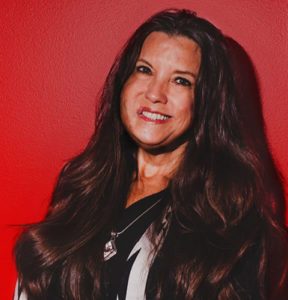
Lois Brayfield, CEO
Once upon a time, a daughter asked her Mother why she cut the ends off the roast before putting it into the oven. “Because that’s how my Mother taught me,” she answered. Curious, the girl asked her Grandmother why this trick made a better roast. “Well I’m not sure, but my Mother taught me to do this and her roasts were always the best!” answered Grandma. Determined to understand why, the curious girl asked her Great-grandma the same question. Gam-Gam answered, “Because if I didn’t cut the ends off the roast then it wouldn’t fit into my pan!”
And so it goes within the halls of many brands today. Working in an agency gives us a unique view into those “phantom rules” or “sacred cows” that are debilitating to developing innovative products, fresh messaging and ideas for new testing. A Phantom Rule is a habit and behavior that is unnecessarily adopted or, a routine that was developed to solve a problem that no longer exists. A Sacred Cow is a practice that people don’t like to question or raise objection to. It’s a belief or a taboo rule that cannot be broken.
I guarantee that all companies have them, and they are the silent killers keeping us from the next break-through! What’s worse is when we find ourselves defending the rule with comments like, “But the budget …”, “… But our supply chain … “, “But our silos … “, “But the founder …”
But, but, but.
What Phantom Rules or Sacred Cows constrain your marketing today? And how do we identify these creative blockades? Simple: question everything. Expose the outdated rules or habits by asking “why” to every procedure, rule, assumption, even how you look at results. The unintended consequence of “We’ve always done it that way” is that you don’t realize your true growth potential.
Once you’ve discovered the “why” behind the rule, demand current and relevant evidence to prove that it still makes sense today, and if it doesn’t, stop using it.
Without naming names, I want to share a few of those rules we’ve witnessed, often more than once. Can you find your own brand in any of these?
- “We must continue to mail our entire customer file!” Arguably the fattest of all sacred cows, it’s been proven that not all in your customer base is worthy of receiving your catalog. I marvel at those brands that continue mailing me a catalog when I’ve not ordered from them in over 5 years and never will. I can only assume they are enslaved by a long-held, long outdated rule.
- Conversely, “We must invest more in digital acquisition and leave the inefficient print model behind. Keep searching for the next shiny thing!” Many a brand rushed to put all of their eggs in the digital basket, forgetting that a well-executed print campaign will often garner a higher ROI. Rather than an all-or-nothing approach, a common sense mix should be explored and tested.
- “Square Inch tells us we must have 10 products on a spread!” Okay, so have you tested fewer products, adding meaningful call-to-actions, directing readers to your website? Gone are the days in which the rule “if you don’t show it, it won’t sell” held true. It’s nothing more than a soundbite. Today, think of your print campaigns as a driver, guiding customers to your store or digital efforts. Don’t believe me? Email me and I’ll be happy to show you test after test in which this rule is proved to be a phantom.
- “Let’s find more DVD players, road maps and sweater vests.” Alright, no one is really saying this, BUT we do find brands unwilling to create innovative products because results point to a short-term best-seller with no long-term potential. Eventually, it will die. And so will this brand. Do your research, talk to your customers and look to the future!
- “We must have a letter on p. 2 of the catalog because 15 years ago Lois told us so.” Uh, yeah. We’ve all fallen victim to those creative rules that were once dogma. The consumer has evolved. They don’t read every word you print, but instead, seek an elevated design aesthetic in which relevancy and ease is the order of the day. They simply don’t have time to read everything, so you must make every image and every word count.
- “We must tout our incredible quality, service and value. That’s what customers really care about.” I call these three the most common cost of entry benefits. They are standard. What do your customers really care about? Moving on …
- “Everything needs to go above the fold of our website.” Guess what? Follow this rule, cram everything in and nothing will stand out! Instead, build a hierarchy of what’s most important and relevant to the customer and place those items above the fold. For the rest? Scroll, they will.
- “We must constantly tweak our site for better usability.” Okay, this is a great thing to do, but how many of you are spending incredible amounts of time tweaking the color of a button, repositioning imagery and tweaking headlines when you are missing a bigger problem at hand? For instance, we see brands with great looking sites, great traffic but horrible conversion due to inventory problems. Get out of the weeds and look at the big picture!
- And finally, the phantom rule I loathe, “We can’t say that, it might offend someone.” Corporate-speak is the harbinger of all boring creative. Consumers appreciate it when brands say what everyone is thinking. How many of you appreciated the Pepsi Super Bowl ad in which they voiced a subtle admission for being number two, with “Pepsi okay?” How more real can you get?
Do you recognize your brand in any of these phantom rules? If you find yourself defending marketing decisions with either “We always…” or “We never…” step back and rethink. Change the phrase to “What if…?”
Please know that you are perfectly capable of cooking an amazing roast without cutting the off the ends. I dare you to try. Let me know if you would like an outside perspective! I’m happy to put Sacred Cows out to pasture.
Tags: brand, breaking rules, Lois Brayfield, marketing plan, phantom rules, rules
